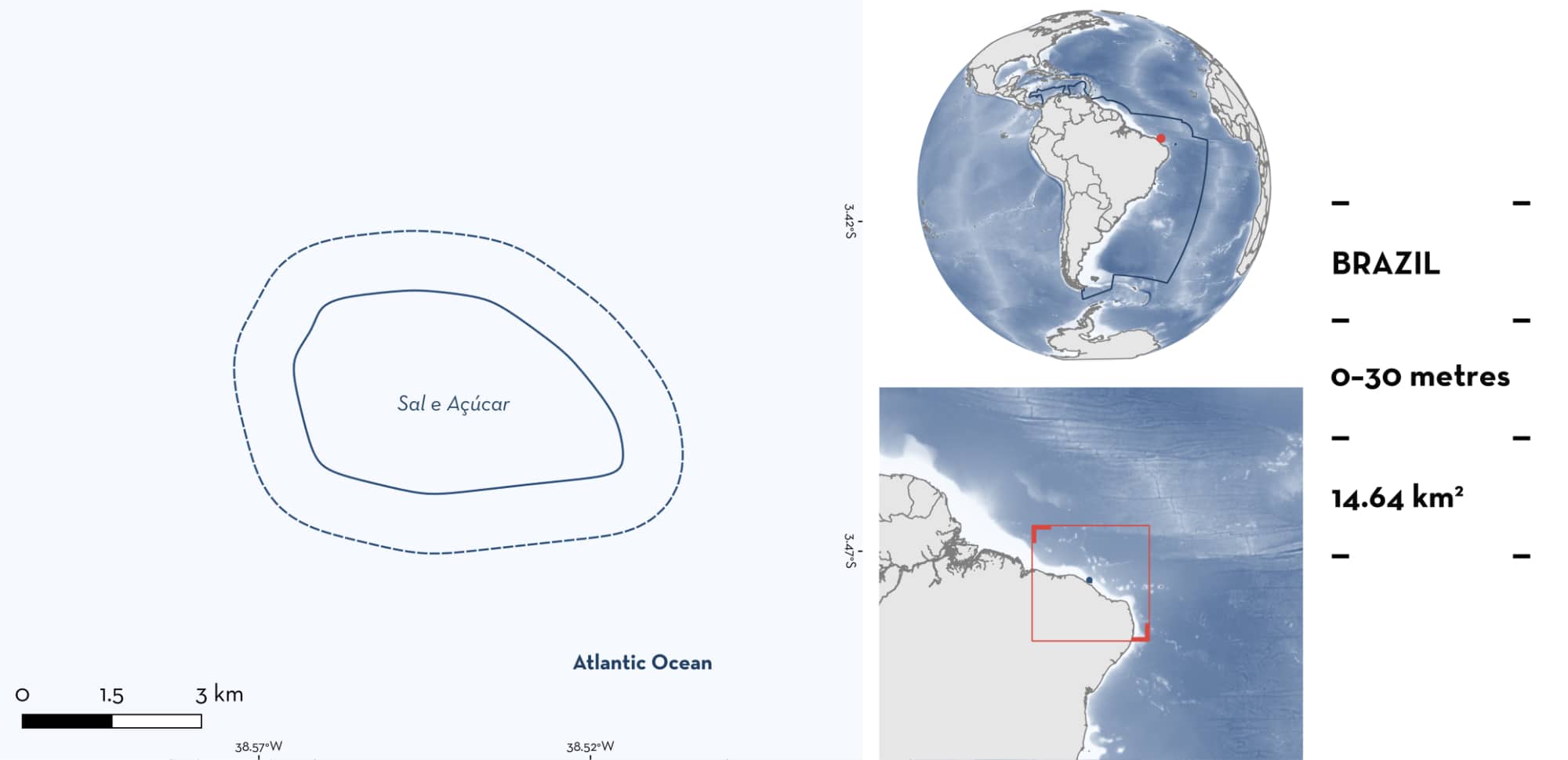ISRA FACTSHEETS
ISRA FACTSHEETS
SOUTH AMERICAN ATLANTIC REGION
Sal e Açúcar
Summary
Sal e Açúcar is located in the Ceará state of Brazil. The area is situated on the continental shelf and the habitat is characterised by a sandy substrate. It is influenced by sediment transportation from wind intensity and the rainy season. Within this area there are: threatened species and range-restricted species (Lutz’s Stingray Hypanus berthalutzae).
Download factsheet
Sal e Açúcar
DESCRIPTION OF HABITAT
Sal e Açúcar is located in the Ceará state of Brazil. The area is situated on the continental shelf and the habitat is characterised by sandy substrate and the presence of two shipwrecks located 900 m apart from each other. During the first half of the year (austral summer), coastal hydrodynamics are more stable, characterised by weaker longshore drift, reduced aeolian sediment transport due to lower wind intensity, and increased moisture retention in sandy substrates, leading to increased underwater visibility (Pantalena 2017; Pantalena et al. 2020). In contrast, in the second half of the year, the dry season is marked by decreased precipitation and intensified trade winds, which enhance sediment resuspension and transport, reducing water clarity (Pantalena 2017; Pantalena et al. 2020).
This Important Shark and Ray Area is benthic and pelagic and is delineated from surface waters (0 m) to 30 m based on the bathymetry of the area.
CRITERION A
VULNERABILITY
One Qualifying Species considered threatened with extinction according to the IUCN Red List of Threatened Species regularly occurs in the area. This is the Vulnerable Lutz’s Stingray (Charvet et al. 2020).
CRITERION B
RANGE RESTRICTED
This area holds the regular presence of the Lutz’s Stingray as a resident range-restricted species. Lutz’s Stingrays are regularly and predictably observed year-round in this area. Between 2012–2024, between 3–20 individuals were observed per dive in all recreational dives conducted twice a year in this area. Lutz’s Stingrays have been observed resting in this area mainly on the sandy substrate and on top of or near the shipwrecks. Individuals are observed solitary, in pairs, or in aggregations of up to ~10. This area is where Lutz’s Stingrays are observed most frequently and in the highest numbers among the dive sites within the Ceará region (JAM Araújo pers. obs. 2024), highlighting its importance for this range-restricted species. Additional citizen science records available through social media support the occurrence of this species in this area in 2022 (at least twelve individuals resting together), and in 2024 (~15 individuals in one dive). Considering the species’ behaviour (buried in sandy substrates) and preferred diving locations, the only individuals regularly seen by divers are the ones near wrecks found in the area. However, the records of animals away from the wrecks indicate that this area might shelter a larger number of individuals on the sandy substrates. The species occurs in the South Brazil Large Marine Ecosystem (LME), the East Brazil LME, and only marginally in the North Brazil LME.
Download factsheet
SUBMIT A REQUEST
ISRA SPATIAL LAYER REQUEST
To make a request to download the ISRA Layer in either a GIS compatible Shapefile (.shp) or Google Earth compatible Keyhole Markup Language Zipped file (.kmz) please complete the following form. We will review your request and send the download details to you. We will endeavor to send you the requested files as soon as we can. However, please note that this is not an automated process, and before requests are responded to, they undergo internal review and authorization. As such, requests normally take 5–10 working days to process.
Should you have questions about the data or process, please do not hesitate to contact us.


